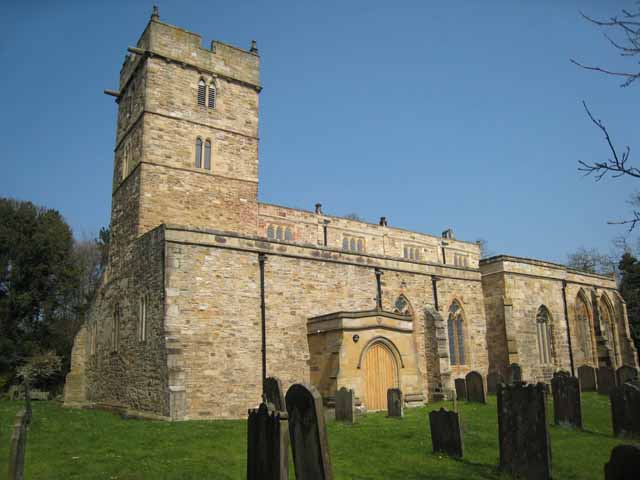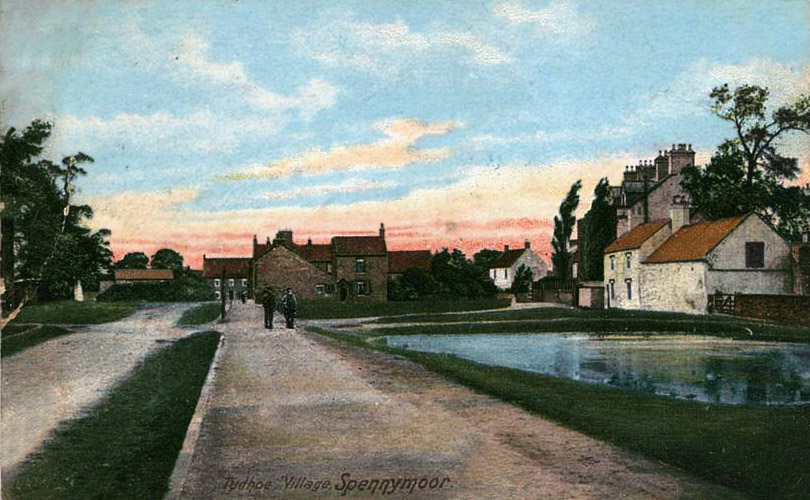|
Whitworth, County Durham
Whitworth was a civil parish in County Durham, in England, centred on Whitworth Hall. It was one of several parishes abolished in 1937 to create the parish of Spennymoor. Whitworth Hall (now a hotel) is on the road between Spennymoor and Brancepeth, and is close to Tudhoe. The house was in former times the home of the Shafto family, whose most famous member (from the 18th century) was Bobby Shafto, subject of a famous English nursery rhyme A nursery rhyme is a traditional poem or song for children in Britain and many other countries, but usage of the term dates only from the late 18th/early 19th century. The term Mother Goose rhymes is interchangeable with nursery rhymes. From t .... References Former civil parishes in County Durham {{Durham-geo-stub ... [...More Info...] [...Related Items...] OR: [Wikipedia] [Google] [Baidu] |
Civil Parishes In England
In England, a civil parish is a type of Parish (administrative division), administrative parish used for Local government in England, local government. It is a territorial designation which is the lowest tier of local government below districts of England, districts and metropolitan and non-metropolitan counties of England, counties, or their combined form, the Unitary authorities of England, unitary authority. Civil parishes can trace their origin to the ancient system of Parish (Church of England), ecclesiastical parishes, which historically played a role in both secular and religious administration. Civil and religious parishes were formally differentiated in the 19th century and are now entirely separate. Civil parishes in their modern form came into being through the Local Government Act 1894, which established elected Parish councils in England, parish councils to take on the secular functions of the vestry, parish vestry. A civil parish can range in size from a sparsely ... [...More Info...] [...Related Items...] OR: [Wikipedia] [Google] [Baidu] |
County Durham
County Durham ( ), officially simply Durham,UK General Acts 1997 c. 23Lieutenancies Act 1997 Schedule 1(3). From legislation.gov.uk, retrieved 6 April 2022. is a ceremonial county in North East England.North East Assembly �About North East England. Retrieved 30 November 2007. The ceremonial county spawned from the historic County Palatine of Durham in 1853. In 1996, the county gained part of the abolished ceremonial county of Cleveland.Lieutenancies Act 1997 . Retrieved 27 October 2014. The county town is the of |
England
England is a country that is part of the United Kingdom. It shares land borders with Wales to its west and Scotland to its north. The Irish Sea lies northwest and the Celtic Sea to the southwest. It is separated from continental Europe by the North Sea to the east and the English Channel to the south. The country covers five-eighths of the island of Great Britain, which lies in the North Atlantic, and includes over 100 smaller islands, such as the Isles of Scilly and the Isle of Wight. The area now called England was first inhabited by modern humans during the Upper Paleolithic period, but takes its name from the Angles, a Germanic tribe deriving its name from the Anglia peninsula, who settled during the 5th and 6th centuries. England became a unified state in the 10th century and has had a significant cultural and legal impact on the wider world since the Age of Discovery, which began during the 15th century. The English language, the Anglican Church, and Engli ... [...More Info...] [...Related Items...] OR: [Wikipedia] [Google] [Baidu] |
Whitworth Hall, County Durham
Whitworth Hall which stands in Whitworth Hall Country Park, near Spennymoor, County Durham England, is a country house, formerly the home of the Shafto family and now a hotel. It is a listed building. Descendants of the Shafto family of Shafto Crag, Northumberland, served as Aldermen, Mayors and Sheriffs of Newcastle upon Tyne in the 16th and 17th centuries. In 1652 Mark Shafto, Recorder of Newcastle, purchased the manor of Whitworth. His son Robert, knighted in 1670 was Recorder from 1660 and his grandson was High Sheriff of Durham in 1709. Two sons of Mark Shafto junior represented Durham City in Parliament: Robert Shafto 1712/3 and 1727/30 and John Shafto 1729-42. John was the father of Robert Shafto, better known as ''Bobby Shaftoe'', who vastly increased the family fortune by his marriage in 1774 to Anne Duncombe of Duncombe Park. Their son Robert Eden Duncombe Shafto, (also Member of Parliament for Durham City and later High Sheriff in 1842), who married Catherine Eden ... [...More Info...] [...Related Items...] OR: [Wikipedia] [Google] [Baidu] |
Spennymoor
Spennymoor is a town and civil parish in County Durham (district), County Durham, England. It is south of the River Wear and is south of Durham, England, Durham. The civil parish includes the villages of Kirk Merrington, Middlestone Moor, Byers Green and Tudhoe. History Origins The land on which Spennymoor now stands was once a vast expanse of moorland covered with thorn and whin bushes (Spenny Moor). In 1336 its Toponymy, place-name was recorded as ''Spendingmor''. The name is probably derived from the Old English or Old Norse ''spenning'' and ''mōr'', meaning a moor with a fence or enclosure. Another theory of the place-name's origin is from the Latin ''spina'', meaning thorn (possibly from the Roman influence at Binchester) combined with the Old English or Old Norse ''mōr''. CE Jackson, in his ''Place Names of Durham'' published in 1916 suggested a combination of the Old Norse ''spaan'' with Old English ''mar'', meaning the moor named after the shingle-hut erected thereon. ... [...More Info...] [...Related Items...] OR: [Wikipedia] [Google] [Baidu] |
University Of Portsmouth
The University of Portsmouth is a public university in Portsmouth, England. It is one of only four universities in the South East England, South East of England rated as Gold in the Government's Teaching Excellence Framework. With approximately 28,280 Undergraduate education, undergraduate and Postgraduate education, postgraduate students, the university is the 25th largest in the United Kingdom by higher education student enrolments. Comprising five Faculty (division), faculties, 24 schools and several other services, the university employs approximately 3,500 staff. In the 2023 edition of the Good University Guide – compiled by The Times and The Sunday Times, Sunday Times – the university ranked 62nd out of the 132 universities in the United Kingdom. In the Times Higher Education REF ranking, the university was ranked third in research power for modern post-1992 universities. Research conducted by the university has a significant global impact; in the latest edition of th ... [...More Info...] [...Related Items...] OR: [Wikipedia] [Google] [Baidu] |
Brancepeth
Brancepeth is a village and civil parish in County Durham, in England. It is situated about from Durham on the A690 road between Durham and Weardale. The population of the civil parish taken at the 2011 census was 414. Brancepeth Castle was until 1570 the fortress of the Neville Earls of Westmorland. The castle was extensively modified and rebuilt in the 19th century by Viscount Boyne (later Baron Brancepeth). It was later a military hospital. St Brandon's Church was famed for its exceptional 17th-century woodwork, until it was destroyed in a major fire in 1998; the church has since been restored and reroofed. In 1924, Harry Colt Henry Shapland "Harry" Colt (4 August 1869 – 21 November 1951) was a golf course architect born in Highgate, England. He worked predominantly with Charles Alison, John Morrison, and Alister MacKenzie, in 1928 forming Colt, Alison & Morrison ... laid out a golf course on the deer park which formed part of the estate surrounding the castle. A c ... [...More Info...] [...Related Items...] OR: [Wikipedia] [Google] [Baidu] |
Tudhoe
Tudhoe is a village in County Durham, in England. It is situated approximately south of the city of Durham. It lies just outside Spennymoor, a short distance to the west of the Great North Road. The village is now a quiet backwater, its green a cul-de-sac that runs down from the main road towards the River Wear. In former times, however, Tudhoe lay at the centre of a network of roads: one ran to Durham by way of Sunderland Bridge and Croxdale, another to Kirk Merrington, a third to Bishop Auckland, a fourth to Whitworth and Byers Green, and a fifth across a ford to Brancepeth Castle and village on the far side of the river. All except the Brancepeth road are shown, somewhat schematically, on Thomas Jeffrey's map of County Durham of 1758. Tudhoe is now dwarfed by Spennymoor, an industrial town that grew up around the Tudhoe iron works in the 19th century. The modern town of Spennymoor lies only a few fields from Tudhoe, but the contours are such that it cannot be seen from m ... [...More Info...] [...Related Items...] OR: [Wikipedia] [Google] [Baidu] |
Bobby Shafto
Robert Shafto (sometimes spelt Shaftoe) (circa 1732 – 24 November 1797) was a British politician who sat in the House of Commons between 1760 and 1790. He was the likely subject of a famous North East English folk song and nursery rhyme "Bobby Shafto's Gone to Sea" ( Roud #1359). Biography Robert Shafto was born around 1732 the son of John Shafto and his wife Mary Jackson, daughter of Thomas Jackson of Nunnington, Yorkshire at his family seat of Whitworth near Spennymoor in County Durham. He was educated at Westminster School from 1740 to 1749, when he entered Balliol College, Oxford.Jessica Kilburn, 'Shafto, Robert (c. 1732–1797)' ''Oxford Dictionary of National Biography'' (Oxford: Oxford University Press, 2004) He succeeded to the family estates on the death of his father John in 1742. Both his father and uncle Robert Shafto had been Tory Members of Parliament. He continued this tradition, becoming one of the two members for County Durham in 1760, using his nickn ... [...More Info...] [...Related Items...] OR: [Wikipedia] [Google] [Baidu] |
Nursery Rhyme
A nursery rhyme is a traditional poem or song for children in Britain and many other countries, but usage of the term dates only from the late 18th/early 19th century. The term Mother Goose rhymes is interchangeable with nursery rhymes. From the mid-16th century nursery rhymes begin to be recorded in English plays, and most popular rhymes date from the 17th and 18th centuries. The first English collections, ''Tommy Thumb's Song Book'' and a sequel, ''Tommy Thumb's Pretty Song Book'', were published by Mary Cooper (publisher), Mary Cooper in 1744. Publisher John Newbery's stepson, Thomas Carnan, was the first to use the term Mother Goose for nursery rhymes when he published a compilation of English rhymes, ''Mother Goose's Melody, or, Sonnets for the Cradle'' (London, 1780). History Lullabies The oldest children's songs of which we have records are Lullaby, lullabies, intended to help a child fall asleep. Lullabies can be found in every human culture. The English term lullaby i ... [...More Info...] [...Related Items...] OR: [Wikipedia] [Google] [Baidu] |




